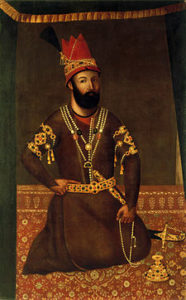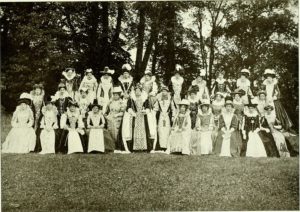
Nader Shah’s portrait from the collection of the Smithsonian Institution
Between tension and rapprochement: Sunni-Shi‘ite relations in the pre-modern Ottoman period, with a focus on the eighteenth century by M. Sait Özervarlı
The Ottoman empire is known for its ethnically and religiously pluralistic social fabric, but also for defending the mainstream Sunni branch of Islam in opposition to its Iranian Safavid rival. This article revisits the Ottoman construction of Sunnism and suggests that, despite strict state policies from above to exclude Shi‘ites and communal pressures from below in the sixteenth and seventeenth centuries, channels of dialogue could not be closed down in the long term. By focusing on a specific intra-religious dialogue of 1743, that aimed at reconciliation between Sunnis and Shi‘ites, this article highlights a probable case of ‘de-confessionalization’. Close examination of the textual account of this inter-communal meeting demonstrates how the Ottomans were torn between defending their Sunni identity and the need for rapprochement to avoid further sectarianism in broader Muslim society.
Invasion, raids and army reform: the political context of ‘flotilla defence’, 1903–5 by Richard Dunley

A1 class submarine, 1902
In response to the pressure of the invasion debates of 1903–1905 the Admiralty developed a new strategy, ‘flotilla defence’, to counter arguments brought forward by the War Office. This concept was a purely political one; it was a cynical bid to mislead the Committee of Imperial Defence in order to secure naval funding. By placing ‘flotilla defence’ in this context this article will demonstrate that it was not, as has been claimed, a revolutionary naval strategy, but part of the polarization of defence policy which led to a breakdown in relations between the army and the navy.
‘And those who live, how shall I tell their fame?’ Historical pageants, collective remembrance and the First World War, 1919–39 by Angela Bartie, Linda Fleming, Mark Freeman, Tom Hulme, Paul Readman and Charlotte Tupman [open access]

Oxford Historical Pageant, 1907 (Wikimedia Commons)
This article examines the ways in which the First World War was represented in historical pageants during the interwar period. Pageants in this period are often overlooked as sites of commemoration and dramatic representation. Three types of pageant are identified: those that portrayed the war hyper-realistically, those which relied on symbolism and allegory to convey messages about war and peace, and those which sought to incorporate the war into the longer histories of the communities whose pasts they depicted. The article argues that ‘traditional’ forms of representation of the past proved to be resilient features of popular commemoration and remembrance.
